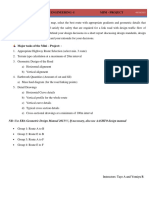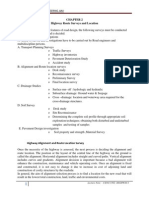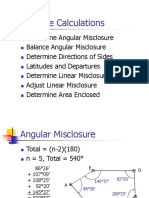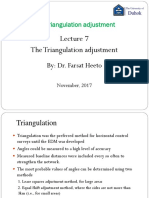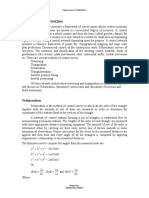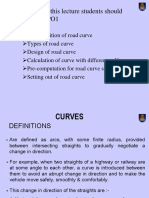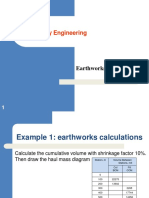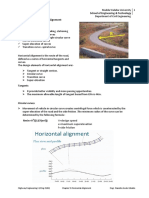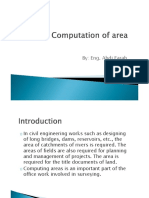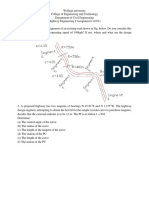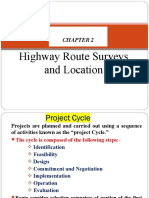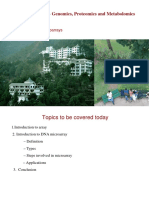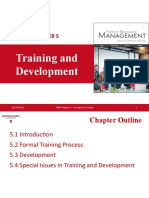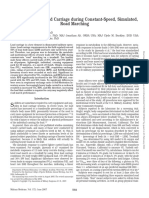100% found this document useful (1 vote)
695 views30 pagesCH 5
1. There are two types of traverses: closed and open. Closed traverses either end at the starting point or another known point, while open traverses end at an unknown point.
2. The departure and latitude of a line can be calculated using either coordinates, distance, and azimuth, or just distance and azimuth. Departure is the horizontal distance multiplied by the sine of the azimuth, and latitude is the horizontal distance multiplied by the cosine of the azimuth.
3. To balance a closed traverse, the closure errors in departure and latitude are distributed to the lines based on their length (Bowditch rule) or departure/latitude (Transit rule) to minimize errors. This allows calculating
Uploaded by
Lencho omerCopyright
© © All Rights Reserved
We take content rights seriously. If you suspect this is your content, claim it here.
Available Formats
Download as PPTX, PDF, TXT or read online on Scribd
100% found this document useful (1 vote)
695 views30 pagesCH 5
1. There are two types of traverses: closed and open. Closed traverses either end at the starting point or another known point, while open traverses end at an unknown point.
2. The departure and latitude of a line can be calculated using either coordinates, distance, and azimuth, or just distance and azimuth. Departure is the horizontal distance multiplied by the sine of the azimuth, and latitude is the horizontal distance multiplied by the cosine of the azimuth.
3. To balance a closed traverse, the closure errors in departure and latitude are distributed to the lines based on their length (Bowditch rule) or departure/latitude (Transit rule) to minimize errors. This allows calculating
Uploaded by
Lencho omerCopyright
© © All Rights Reserved
We take content rights seriously. If you suspect this is your content, claim it here.
Available Formats
Download as PPTX, PDF, TXT or read online on Scribd
/ 30













